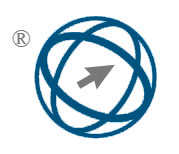A Comparative Performance Analysis of CNN, LSTM, and CNNLSTM Models for Classifying Sleep Stages Using Electroencephalography Signals
Abstract
Full Text:
PDFReferences
Walker, M. P. (2017). Why We Sleep: Unlocking the Power of Sleep and Dreams. Scribner, Publisher: Scribner , Length: 368 pagesISBN13: 9781501144325
Siegel, J. M. (2005). Clues to the functions of mammalian sleep. Nature, 437(7063), 1264–1271. https://doi.org/10.1038/nature04285
Rechtschaffen, A., & Kales, A. (1968). A manual of standardized terminology, techniques and scoring system for sleep stages of human subjects., U.S. Department of Health, Education, and Welfare.
Iber, C., Ancoli-Israel, S., & Chesson, A. (2007). The AASM manual for the scoring of sleep and associated events. Medicine , American Academy.
Sanei, S., & Chambers, J. A. (2013). EEG Signal Processing. John Wiley & Sons, 1118691237, 9781118691236.
Lopes da Silva, F. (2005). "Electroencephalography: Basic principles, clinical applications, and related fields",Lippincott Williams&Wikins,
Hochreiter, S., & Schmidhuber, J. (1997). Long short-term memory. Neural computation, 9(8), 1735-1780. http://dx.doi.org/10.1162/neco.1997.9.8.1735.
Chengfan L., Yueyu Q. and Xuehai D. (2022). A "Deep Learning Method Approach for Sleep Stage Classification with EEG Spectrogram", PMCID: PMC9141573 PMID: 35627856. . https://doi.org/10.3390/ijerph19106322
Tsinalis, O., Matthews, P. M., & Guo, Y. (2016). Automatic sleep stage scoring using time-frequency analysis and stacked sparse autoencoders. Annals of Biomedical Engineering. https://doi.org/10.48550/arXiv.1610.01683
Sasai, S., Koike, T., Sugawara, S. K., Okazaki, S., Watanabe, K., Sadato, N., & Iguchi, Y. (2017). "Network-wide reorganization of procedural memory during NREM sleep revealed by fMRI". eLife, 6, e24987. https://doi.org/10.7554/eLife.24987
Nicola M., U.Rajendra A., Filippo M. (2019). Cascaded LSTM recurrent neural network for automated sleep stage classification using single-channel EEG signals. Computers in Biology and MedicineVolume 106,Pages 71-81. https://doi.org/10.1016/j.compbiomed.2019.01.013
Asma Salamatian and Ali Khadem . (2022
).Automatic Sleep Stage Classification Using 1D Convolutional Neural Network. Frontiers in Biomedical Technologies.Vol. 7, No. 3. http://dx.doi.org/10.18502/fbt.v7i3.4616
Huijun Y., Zhuqi C., Wenbin G., Lin S. and Yidan D. (2024). " Research and application of deep learning-based sleep staging: Data, modeling, validation, and clinical practice." Sleep Medicine Reviews.Volume 74, 101897.
https://doi.org/10.1016/j.smrv.2024.101897
Luic A., Takashi A.and Marta Molinas (2023):" EEG-based 5- and 2-class CNN for Sleep Stage Classification." , IFAC-PapersOnLine ,Volume 56, Issue 2, Pages 3211-3216. https://doi.org/10.1016/j.ifacol.2023.10.1458
Enes E., Seral O. (2023). "CoSleepNet: Automated sleep staging using a hybrid CNN-LSTM network on imbalanced EEG-EOG datasets." Biomedical Signal Processing and Control ,Volume 80, Part 1, February, 104299. https://doi.org/10.1016/j.bspc.2022.104299
Kotla R. and Polavarapu N. and Safa P. (2023)." A CNN-LSTM Model for Sleep Stage Scoring Using EEG Signals": 2023 International Conference on Communication, Circuits, and Systems (IC3S). https://doi.org/10.1109/IC3S57698.2023.1016917
Ralf C. Staudemeyer and Eric R. (2019). " Understanding LSTM -- a tutorial into Long Short-Term Memory Recurrent Neural Networks", arXiv:1909.09586v1 [cs.NE] 12 Sep 2019. http://dx.doi.org/10.48550/arXiv.1909.09586
.
Lecun, Y., Bottou, L., Bengio, Y., & Haffner, P. (1998). "Gradient-based learning applied to document recognition." Proceedings of the IEEE.
Krizhevsky, A., Sutskever, I., & Hinton, G. E. (2012). "ImageNet classification with deep convolutional neural networks." Advances in Neural Information Processing Systems.
Goodfellow, I., Bengio, Y., & Courville, A. (2016). Deep Learning. MIT Press. https://doi.org/10.1007/s10710-017-9314-z
Ghita A. ,Amina A., and Mohammed B. (2022). " EEG signal analysis using deep learning: A systematic literature review." 2021 Fifth International Conference On Intelligent Computing in Data Sciences (ICDS). https://doi.org/10.1109/ICDS53782.2021.9626707
Roy, Y., & Banville, H. (2019). " Deep learning-based electroencephalography analysis: a systematic review" Frontiers in Neuroscience. https://doi.org/10.1088/1741-2552/ab260c
G. Sudhamathy, N. Valliammal, P. Subashini, T. T. Dhivyanrabha and R. G. Sneha, "Hybrid Convolutional Neural Network - Long Short-Term Memory Model for Automated Detection of Sleep Stages," 2023 International Conference on Intelligent Systems for Communication, IoT and Security (ICISCoIS), Coimbatore, India, 2023, pp. 510-515,
https://doi.org/10.1109/ICISCoIS56541.2023.10100489
Phan, H., et al. (2019). "SeqSleepNet: End-to-end hierarchical recurrent neural network for sequence-to-sequence automatic sleep staging." IEEE Transactions on Neural Systems and Rehabilitation Engineering. https://doi.org/10.1109/TNSRE.2019.2896659.
Kemp, B., Zwinderman, A. H., Tuk, B., Kamphuisen, H. A., & Oberye, J. J. (2000). Analysis of a sleep-dependent neuronal feedback loop: The slow-wave microcontinuity of the EEG. IEEE Transactions on Biomedical Engineering, 47(9), 1185–1194. https://doi.org/10.1109/10.867928
Goldberger, A. L., Amaral, L. A. N., Glass, L., et al. (2000). PhysioBank, PhysioToolkit, and PhysioNet: Components of a New Research Resource for Complex Physiologic Signals. Circulation, 101(23), e215-e220. http://dx.doi.org/10.1161/01.CIR.101.23.e215
DOI: https://doi.org/10.31449/inf.v49i28.8082

This work is licensed under a Creative Commons Attribution 3.0 License.









